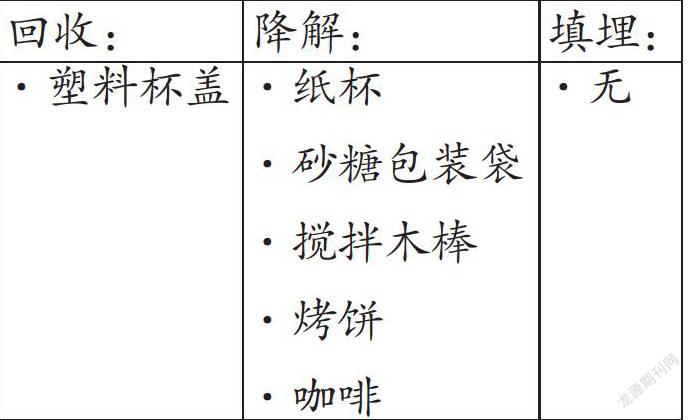Talking Trash聊聊垃圾那些事儿
斯蒂芬·温蒂勒


As the world’s population continues to grow, we need to learn more about waste management. Garbage disposal is now a persistent global problem, and now more than ever, it’s time to take it seriously!
How much waste do we produce each day?
There is a lot of hazardous waste in existence today. Did you know the average person produces 4.3 pounds of waste per day? No?
Now, imagine how many solid wastes are produced if there are 7,688,686,950 people who live on this Earth. It’s time to take out the trash and apply proper solid waste management.
Landfill and incineration as waste treatment processes
The most common waste treatment processes are the use of landfills and incineration. Incineration involves the combustion of organic waste or substances contained in waste materials.
Incineration and other waste treatment systems that use high temperatures are considered a “thermal treatment.” Incineration of waste materials transforms waste into heat, flue gas, and ash.
This waste disposal is popular due to its ability to drastically decrease the amount of space required to store/house waste materials. However, when all the waste is set ablaze, it releases high quantities of carbon gas into the atmosphere. Carbon is one of the key global warming gasses.
Landfills are another waste treatment process used to store/breakdown domestic and some industrial waste and hazardous materials. Through this practice, waste is stored in a trench and soil is tossed over the infectious waste regularly.
As the waste materials sit in the landfill, the probability of the landfill triggering environmental harm increases. For example, landfills can contaminate nearby groundwater resources and produce an abundance of methane gas.
Methane Definition: A flammable, colorless, and odorless gas utilized in the chemical industry, like producing methanol and hydrogen.
What many people don’t know is that methane is over 20 times more detrimental to the atmosphere than carbon dioxide. Landfill gases play a hand in the climate change problems we are currently facing.
How to manage waste
Now that we know how much waste we produce and how our waste is managed, let’s start thinking about what role we play in this process.
We produce hazardous waste and non-hazardous waste at home, so we should be responsible for it. Right? Right!
It’s very easy to get stuck in the mindset that once we throw something away, it’s gone. To put this into perspective, Anne Krieghoff, who is the manager of solid waste and recycling at the University of California, Irvine shares this, “there is no away.”
The plastic bottle we just dropped into the trash may have left us, but that doesn’t mean it’s gone. We tend to think—out of sight, out of mind. But, someone else somewhere else is dealing with our waste as we speak.
One way for us to manage our waste and our impact on the environment is to divert waste materials from landfills and the process of incineration. We can easily do this by identifying the effects of certain waste materials based on their composition.
We can also evaluate its potential to be recycled and reused. Then, it’s just a matter of placing our waste materials in the right bin.
That’s it! Waste management and proper waste disposal are really simple.
Take a moment to think about the amount of waste you produce in just one day. Say you buy a cup of joe and a pastry from your local coffee shop.
Just from this one purchase, you are looking at the paper cup, the cardboard sleeve, the plastic lid, the packaging of the sugar packets, the wooden stick you used to stir in your sugar, and last but not least, whatever packaging used to keep your pastry fresh. Also, let’s not forget that you might not finish all of your drink or food.
Think about all the waste you just produced—that’s just from one meal. Now you’re asking, “How do I know what goes where?”
It can be a bit overwhelming at first, but once you start recycling and picking up the rules, you’ll sort your trash with ease in no time.
How to sort your waste
Here are some quick rules to consider when tossing out your yard waste or trash and recycling them:
· recycle any paper product
· recycle plastic containers
· recycle any foil or metals
· compost anything that was once “organic” (a living thing at one point in time, i.e. greens, bones, and paper)
· recycle any glass (recycling containers)
With these rules, how should you sort this waste? For example, we have the following:
· 1 cup
· 1 lid
· 2 sugar packets
· 1 stir stick
· half a scone
· ¼ cup of coffee
Recycle: Compost: Landfill:
· Plastic lid · Paper cup
· Sugar packets
· Wood stir stick
· Scone
· Coffee · None
That’s right—out of all those things, nothing went to a landfill. You can divert them all to trash recycling or composting.
If all of us start taking responsibility for our environmental violations and non-hazardous and hazardous waste management, we can divert so much waste from landfills and incineration. Let’s make zero waste a reality, together!
随着世界人口持续增长,我们在废弃物管理方面的知识也该跟上。垃圾处理目前是困扰全球多时的老大难问题,如今比以往任何时候都需要严肃对待!
我们每天会产生多少废弃物?
当今时代存在着大量有害的废弃物。你知道平均每人每天会产生4.3磅垃圾吗?不知道?
那么想象一下,如果有7688686950人住在地球上,会产生多少固体废弃物。是时候把垃圾运走,对固体废弃物进行妥善管理了。
废弃物处理法:填埋与焚烧
最常见的废弃物处理法便是填埋与焚烧。焚烧即烧毁有机废弃物或废弃材料包含的各种物质。
焚烧等使用高温来处理废弃物的方法属于“热处理”。废弃材料经由焚烧可轉变为热量、烟气和灰烬。
这种处理方法十分流行,因为这样一来,用于存放废弃材料的空间便能显著减少。然而,所有废弃物熊熊燃烧之际,大量的含碳气体也被释放到大气中。碳排放是导致全球变暖的主因之一。
废弃物处理的另一种方法是填埋,用于存储或分解生活垃圾、一些工业垃圾和有害垃圾。通过这种方法,废弃物被存储在大坑之中,致病废弃物的上面会定期覆盖泥土。
由于废弃材料是填埋入土,填埋引发环境危害的可能性也越来越大。举个例子,填埋可能污染附近地下水资源,并产生大量甲烷气体。
甲烷的定义:一种可燃、无色、无味的气体,在化工领域中被用于制备甲醇和氢等。
许多人并不知道,甲烷对大气的杀伤力比二氧化碳大二十几倍。在我们如今面对的气候变化问题中,填埋产生的气体难辞其咎。
如何处理废弃物
我们已经知道自己会产生多少废弃物,也知道了废弃物的处理方法,现在该思考一下自己在这个过程中所扮演的角色。
我们在家里产生有害及无害废弃物,所以应该对它们负责。对吧?对!
人们很容易陷入这样的思维,觉得一旦把东西扔掉,它就消失了。针对这样的想法,加州大学欧文分校固体废弃物及再循环部门经理安妮·克里格霍夫表示:“什么都没有消失。”
刚刚扔进垃圾桶的塑料瓶也许离开了我们的视线,但并不意味着它们就消失了。我们往往会认为——眼不见、心不烦。可就在此时此刻,某个地方的某些人正在处理我们的废弃物。
要想处理我们的废弃物及控制我们对环境的影响,有一种方法就是不让废弃材料被填埋或焚烧。只要根据某些废弃材料的成分识别它们的效用,就能轻松实现这个目标。
我们还可以评估它们能否被循环再利用。然后,将它们放进对应的垃圾桶即可。
大功告成!管好垃圾,处置得当,其实很简单。
花点儿时间想想,你在短短一天之内会产生多少垃圾。比如,你从当地咖啡店里买了一杯咖啡和一块糕点。
光是这一次购物,你手里就有了纸杯、硬纸杯套、塑料杯盖、砂糖包装袋、搅拌砂糖用的木棒,还有保鲜糕点用的包装纸。而且别忘了,你可能喝不完咖啡,吃不完糕点。
想想你刚才产生的所有废弃物吧——这还只是一顿饭而已。现在你要问了:“我怎么知道该把什么东西放到哪里去呢?”
一开始你可能会觉得有点儿手足无措,但是一旦开始循环利用、掌握规则,垃圾分类就会立刻变得易如反掌。
如何将废弃物分门别类
在丢弃庭院里的废弃物或垃圾并进行循环利用时,可以参考这些小窍门:
·循环利用任何纸质产品
·循环利用塑料容器
·循环利用任何箔纸或金属
·降解处理曾经是“有机物”(曾有生命之物)的东西,例如草、骨头、纸张。
·循环利用任何玻璃制品(容器再循环)
依据上述规则,那次购物产生的废弃物该如何分类呢?比如以下这些:
·一个杯子
·一个盖子
·两个砂糖包装袋
·一个搅拌棒
·半个烤饼
·四分之一杯咖啡
回收: 降解: 填埋:
·塑料杯盖 ·纸杯
·砂糖包装袋
·搅拌木棒
·烤饼
·咖啡 ·无
这就对了——最后,没有任何东西需要填埋。它们有的可以回收利用,有的可以降解处理。
如果我们所有人都对自己造成的环境破坏、对无害和有害废弃物管理负起责任,那么很多垃圾就不用填埋或焚烧了。让我们携起手来,将零废弃变成现实!
(译者单位:复旦大学)

